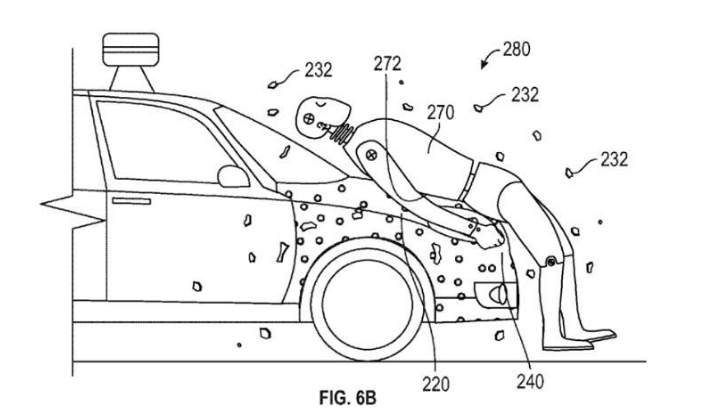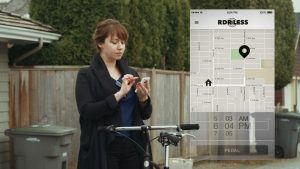The Cross Canada Cycle Tour Society July 2016, Volume 33, Issue #7
President’s Report John Pringle
A reflection on past policy – Ride with friends or ride to make friends?
First Come First Served. A few years back the Club adopted, after considerable and upon occasion, acrimonious debate, a “first come first served” policy ( meaning “ … that people will receive something or be dealt with in the order in which they ask or arrive”, Cambridge English Dictionary) for choosing tour participants. Karelo’s adoption by the Club facilitated this policy. Simple it is; the Karelo dates and provides time of day of participant’s registrations. The policy is most egalitarian, thus why the fuss over its adoption? It had been the policy that a Tour Leader (TL) earned the right to choose his/her tour participants. Earned, because a TLs task is onerous and time consuming. If one is going to take the task on, it was felt, the TL surely has the right to choose with whom they ride. A problem emerged, as the Club grew in membership: These new members, and hence “non-friends” of the TLs found it difficult to gain access to a tour. Membership disgruntlement set in. Being new to both Club and Board I failed to understand the concern of many older and more experienced members with this new policy; some were TLs who’d contributed enormously to the Club’s success. One, whom I respect very much, informed me this seemingly fair and equitable scheme prevented him from “… riding with his friends.” One casualty of this policy adoption was the resignation of a prominent Board member. Serious stuff. And upon reflection, was it necessary? Could the antagonists not have settled their indifferences in a more civil manner? In retrospect, I believe so.
For example, there is an alternative to Club tours; private tours organized for friends by friends. They do occur, and are organized by Club members for Club members. When, as Club Tours Director, and thereby responsible for the provision of an annual Club tours schedule, I admit to having felt some disappointment when learning of such tours. It seemed they were a lost opportunity for the Club. But recently I too participated in such a tour, and good fun it was. Well organized. Small. Intimate. And I quickly concluded they can be a win for the Club; they provide a familiar and friendly environment for tour leader(s) to develop tour organizing and leadership skills. And, no doubt, these skills will be used by these leaders when they eventually decide to lead a Club tour.
Getting back to” first come first served”, Kumiko and I joined the Club in ~2007, in part, to take on the Les Hudgins-led China Tour. Though the new policy had not been adopted, he deployed it, and our registrations slowly moved from deep in the wait-list, to us making the Tour. I’ll be for ever grateful to Les, for his egalitarian approach; to allow non-friends on his wonderfully adventurous tour. And it has been a delight to have ridden on many tours since; each starting with some non-friends, and finding, as Alexandra Phillion pointed out in her Cowichan Valley Hub & Spoke report of a few years back that, as each tour ages, one is soon riding with “new friends”.
Please note: The Board/Club will likely, in the very near future, be making some key policy decisions. It is my hope that they can be made while maintaining Club harmony.
Lessons Learned in Preparing for a Tour. The private tour noted above was unsupported; motel and restaurants were used, but our personnel needs were carried in twin panniers mounted on touring bikes. Though I’d been back from the African tour for weeks, my touring bike frame was yet hanging on my garage-located bike rack. Parts, including wheels, were distributed nearby. The mild and dry early spring allowed use of my road bike. Two days prior to our departure I began reassembling the bike. First day was clean-up of Tanzanian sourced mud and sand. The bike looked spiffy that evening. The second day would have all the clean and shining parts attached. The bike would be whole again and mounted by evening, on the car rack, ready to depart for Nelson. With wheels attached I sped down my steep driveway. Front wheel scraped badly, and big ring would not accept chain. Serious maladies indeed. Airline accumulated damage no doubt. What to do with only hours ‘til departure? With good fortune I deal with a very good bike shop, but it is 35 km from home. A call to a closer home-based bike mechanic found him too busy to take on my ailing bike. It is now past noon. I speed to my heavily used and very busy bike shop. Surely in early June their wait list would be a week long, leaving me to back pack on my road bike. Yikes. I arrived at the shop with dry mouth. The staff detected my state. They calmed me down, and with soothing demeanour one said, “We’ll not see you stranded.” The bike was ready by 5:00 p.m. that evening: It provided a trouble free tour.
Lessons learned:
- Don’t leave bike assembly to two days prior to tour departure;
- Don’t expect a bike, flown a half a world away on a number of airlines, to be trouble free; and most importantly,
- Deal with a bike shop that provides excellent service to long standing clients, even if said client has been somewhat foolhardy.
Welcome New Members
| Eugene | Rooney | Kanata | ON |
| Susan | Overholt | Ottawa | ON |
| Bryan | Newton | Ottawa | ON |
| Sandra | Zagon | Ottawa | ON |
| Robert | Turner | Sidney | BC |
| Judy | Turner | Sidney | BC |
| Ray | Baker | Surrey | BC |
| Madhuri | Pendharkar | Vancouver | BC |
| Laurie | Wilson | Victoria | BC |
| Duncan | Mclelland | Victoria | BC |
Google’s Self-Driving Solution for Cyclists and Pedestrians Is…Human Flypaper?
Now you won’t only get hit by cars, you’ll get stuck to them too!
Written by: Hilary Angus
A diagram from the patent showing how the victim would become stuck to the vehicle.
Driverless cars are coming, and soon. While critics have voiced legitimate concerns about how large numbers of autonomous vehicles will interact with even larger numbers of pedestrians and cyclists – both of whom are known to occasionally move about unpredictably – Google has been busy developing a solution, sort of.
The tech giant recently was recently awarded a patent for a strong adhesive coating that would stick a human to the front of a self-driving car, should they have the misfortune to be hit by one. As the San Jose Mercury News first reported, the fairly simple technology would essentially function like human flypaper, binding the pedestrian or cyclist to the front of car instantaneously upon impact, thereby preventing them from being thrown back onto the street where they’d be vulnerable to further injury.
“The adhesive layer may be a very sticky material and operate in a manner similar to flypaper, or double-sided duct tape,” the patent said. The patent acknowledged that autonomous cars will inevitably hit pedestrians or cyclists, so the glue hood is supposed to function as a temporary harm reduction solution until self-driving cars can be made completely accident-proof.
The duct tape-inspired “technology” would normally be protected by a thin, eggshell-like material to prevent it from collecting road dust, bugs, small birds or flying plastic bags during its everyday commute. When the car inevitably collides with a pedestrian or cyclist, the force of impact would shatter the shell and the bewildered, likely injured human would be left entrapped on the hood, like a fly in a spider’s web.
However, the awarding of this incredibly unusual patent does not mean this technology is actually going to make it to the streets anytime soon. Google holds patents on a variety of ideas, some make it to market and others don’t.
While we applaud Google’s efforts thus far to makes things as safe as possible for pedestrians and bicyclists, I’m not sure I’d throw my vote behind developing the flypaper idea any further. More than create a perfect solution, the sticky mess just raises a lot of questions. Would it really be safer to be stuck to the car than back down on the street? What if the impact caused an injury (say, to the spine), where dangling from the hood of a vehicle was more likely to exacerbate it then help it? What if a technological glitch caused the crash in the first place and the malfunctioning vehicle goes flying off into another vehicle with the poor pedestrian stuck to the front of it?
This is a classic case of a solution which creates its own new set of problems. What remains to be seen is if the potential benefits of the flytrap do actually outweigh its possible costs. In the meantime, I’ll be over here working on my fly costume, just in case.
If you think that was weird, how about this.
First there was the driverless car, now there is a riderless bike
By CBC Radio
The driverless car is widely heralded as the transportation method of the future but many critics say there are more efficient and greener ways to navigate through our world.
Enter the riderless bike. The small Vancouver, B.C., startup RDRLESS, is banking on the idea that people will want bicycles that ride themselves in the near future.
“Although Google is also working on an autonomous bike, ours is more disruptive because it doesn’t require a rider at all,” claims CEO Bill Lindsay. “This also makes ours safer because it completely eliminates human error.”
Shelia McKenzie uses the RDRLESS app to send her bike off to work. (Joseph Schweers/Derek Pante)
Shelia McKenzie, is a beta-user of RDRLESS and she loves using her bike on weekends: “Friends will often call me up to go on a bike ride but I’d rather stay inside and watch Scandal. Now I just send my bike while I curl up with Kerry Washington.”
RDRLESS is still in the prototyping phase but will be launching in August and rolling out a tandem bike next spring.
(This is That is an award-winning satirical current affairs show that doesn’t just talk about the issues, it fabricates them.)
Upcoming Tours
- Walla Walla and Baker City Deluxe
- 2016 Southern Rockies Tour 2
- 2016 Southern Rockies Tour
- Croatia 2016: As It Used to Be
Upcoming Hub and Spokes
- Okanagan Hub and Spoke (Vernon Hub)
- Vancouver Hub & Spoke, August 8-11, 2016
- Manitoulin Island Hub & Spoke, September 7-12, 2016
Hub and Spoke Report
NEWSBRIEF
Published at least ten times a year by The Cross Canada Cycle Tour Society, a non – profit organization for retired people and others who enjoy recreational cycling. The NEWSBRIEF is available, in colour, to paid up members, on the CCCTS website.
Items for the NEWSBRIEF must be received by the 28th of the month. The Editor reserves the right to edit for clarity, brevity and suitability of publication. The views expressed in “NEWSBRIEF” are not necessarily those of the CCCTS or the Editor.
Submissions for NEWSBRIEF may be mailed to J. Klein, Newsbrief Editor, 1421 Wende Road, Victoria, BC V8P 3T6 or emailed.
E-mail: jklein@3web.com or derailler@gmail.com
Memberships are valid until year end, at which time a renewal reminder will be sent.
Single membership $30.00CA
Couple membership $60.00CA
Please be sure to notify the office of any changes in your personal contact information; be it address, phone or e-mail.


